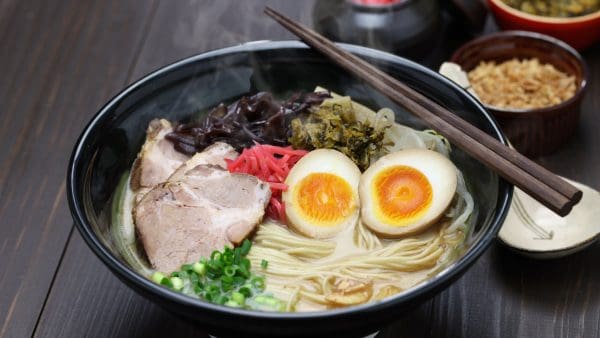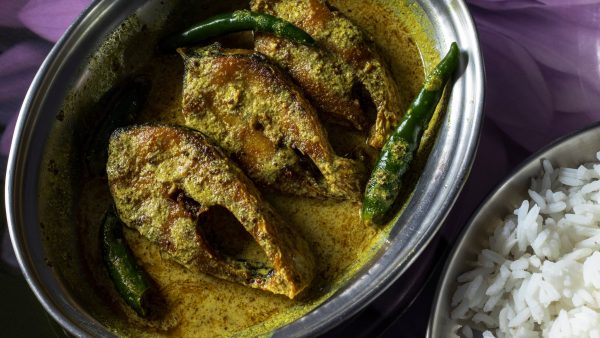Rice is a staple food that is majorly eaten as the main energy source of carbohydrates in Southeast Asia. It is long debated the origin of rice in the world. It is believed that rice first started growing in South Central China and the Yangtze river millions of years ago. It later spread to Korea, Japan, and other places to Asia’s southwest and northeast part.
Different Varieties & Types Of Indian Rice!

Rice is said to be million years old. A recent study in the Pisdura village of Chandrapur district revealed a surprising finding. After an analysis of a plant matter found in the dung of dinosaurs. New evidence suggests that dinosaurs probably enjoyed eating it too and that rice may originate back to the Jurassic period or even earlier. This debate of rice first growing up in India or China still remains an unsolved mystery.
Rice is the staple food after wheat in India. Rice consumption depends and varies according to geography. Indian states like Karnataka, Tamil Nadu, Kerala, Manipur, Assam, Nagaland, Andhra Pradesh rely mostly on rice for their major carbohydrate calorie intake. However, states like Haryana, Rajasthan, and Punjab in the Northern part of India rely heavily on wheat.
India produces a large variety of rice and majorly exports Basmati and white rice. Needless to say, India also happens to be the largest exporter of rice in the world. With the regional diversity of India, rice is used in different variations, from rice noodles to rice papad. Rice flour is used to make roti’s, rice cakes popularly called Idli, and so many more dishes like white rice dhokla, sweet rice porridge, etc. We all know of the famous Basmati rice that is used in Biryani, Pulao, and so on. Basmati rice, specially grown in the Kashmir Valley, is said to be the best variety. With its fragrant aroma that almost creates a spell. But did you know there are a plethora of rice varieties as interesting as Basmati! Let’s dive deep and discover India’s rice varieties.
Generally, rice is divided into three broad types; short grain, medium grain, long grain. Let’s check them out.
Matta Rice – Growing up in Mumbai, I had no clue about Matta rice until I visited Kerala. Unpolished rice that has a reddish tone to it. Short grain and triples up in size and is much loved by the locals of Kerala and Karnataka. It takes way longer to cook, almost three times the time of white rice. It is boiled and eaten alongside curries and vegetables.
Nellore Rice – Also known as Molakolukulu, this rice variety gets its origin from the Nellore region of Andhra Pradesh. Medium-grain rice that is eaten daily.
Ponni Rice – Grown in Tamil Nadu along the banks of river Kaveri, this medium grain rice is eaten widely and daily. It is also used to make appams, lemon rice, etc., and is quite popular in Tamil Nadu. Usually, lunch meals accompanied by rasam, sambhar, poriyal, etc., is when Ponni rice is used.
Sharbati – Grown in the states of Haryana, Uttar Pradesh, and Punjab, Sharbati rice is the non-popular variety of Basmati. It is not as aromatic as the Basmati but still is long-grain rice. In short, this is the low-cost alternative to Basmati.
Parmal – A long grain aromatic rice grown in Haryana, Uttar Pradesh, and Punjab. This aromatic rice doubles up after properly cooked and has a uniform grain size. An alternative to Basmati rice that can be used for making Biryani, Pulao, etc.
Have you ever wondered how those street-style Chinese places or Biryani Kadai sell rice dishes with Basmati rice at low-cost rates? Thanks to varieties like Parmal and Shabati.
Surti Kolam – A popular white rice used in India. Just as the name suggests, it comes from the state of Gujarat. Used to make daily dishes, it is widely used in Gujarat and Maharashtra.
Bamboo Rice – While the name might leave you feeling baffled and confused, this rice is unlike the rice that grows in paddy fields. Also known as Mulayari rice, it is the seed of a dying bamboo shoot. This rare, short-grain rice takes a long time to grow. Usually collected by the tribes or indigenous locals who collect it for their own use and sometimes sell off the excess.
Brown Rice – This rice is a new fitness fad. People who are dieting or trying to lose weight generally switch to brown rice. It contains a high amount of dietary fiber since it is a whole grain that contains the bran and the germ. Recent studies have led to a debate that brown rice could also be unhealthy since it contains a certain amount of antinutrients. Antinutrients are plant compounds that may reduce one’s body’s ability to absorb certain nutrients leading to deficiency.
Jeera Samba / Seeraga Samba – My first introduction to this short-grain rice was quite recently when I moved to Chennai. I was used to eating basmati rice in biryani. But after trying biryani from a few places, I noticed this short-grain rice that tasted unique, aromatic, and quite delicious. With a size slightly bigger than cumin, this rice grows in Tamil Nadu. Used mostly in Ambur, Dindigul, Malabar and Thalassery Biryani. Personally, I use it to make ghee rice too and love how my home smells aromatic every time I cook this rice. The Seeraga Samba gives a lesser yield per hectare and hence is as expensive as the real Basmati rice variety.
Mogra Rice – A long-grain rice that is similar to Basmati and also cost-effective. Mogra translates to Jasmine in the Hindi language. Just as the name suggests, this rice is very aromatic, non-glutinous, and contains a high amount of starch. When cooked properly, it turns out slender and fluffy. Mogra rice is enjoyed throughout India.
Red Rice – People often confuse red rice with matta rice. Matta rice has a slight hue of rice and has fatter grain; however, red rice is slender and colored red throughout by its anthocyanin content. Grown in parts of Uttarakhand and Himachal Pradesh, this short-grain rice variety is said to be healthier than white rice. It has a unique taste and is quite fibrous. With increased urbanization, very few farmers produce this variety. On my recent trip to Jana Waterfalls near Naggar, I had the opportunity to eat this rice and ended up liking it. Kheer or rice porridge made with red rice also turns out really good.
Basmati – This special long-grain has been cultivated at the foothills of the Himalayan mountain ranges. A longer shelf life, fluffy texture, high volume expansion during cooking, an appealing aroma and taste make Basmati the queen of rice. This is also the variety that is majorly exported.
Gobindobhog – The key to a Bengalis heart. Short-grain rice that has a unique texture, aroma, and almost a buttery sweet flavor. A popular rice variety in West Bengal and also in Odisha. Gobindobhog translates to offerings to Gobindo or Govinda. This rice is used to make Bhog (food offered to deities at all major festivals). Used to make Khichuri (Khichdi) and even used to make biryani at the most famous military canteens in Bengaluru.
Black Rice – Locally known as Chak Hao Amubi and Chak Hao Poireiton in Manipur. This variety of black rice is becoming increasingly famous. Sticky and sleek in texture, they have a natural sweetness. Believed to have phytonutrients, rich in antioxidants and anthocyanin, black rice is now being used in other parts of India, like Chennai. Back in Manipur, these varieties are eaten during celebrations, ceremonial, and community feasts.
Mappillai Samba – Grown predominantly in Tamil Nadu, Mappillai Samba translates to “Bride Groom Rice.” It has high fiber content and is convenient for organic farming as it rarely demands fertilizers. Idli (rice cakes) made using this rice turns out delicious. Mappillai Samba also has a low glycemic index making it a good choice for diabetic patients.
With a diverse country like ours, we are fortunate to be blessed with countless rice varieties. The ones mentioned above are just a sneak peek into the rice world. If at any time you have a hard time deciding which variety to buy (thanks to the rebranding and hundreds of options available online), remember not all long-grain rice is Basmati.
Hoping this article helped you get a better idea of rice varieties in India.









Let's discuss here - Share your thoughts and queries!